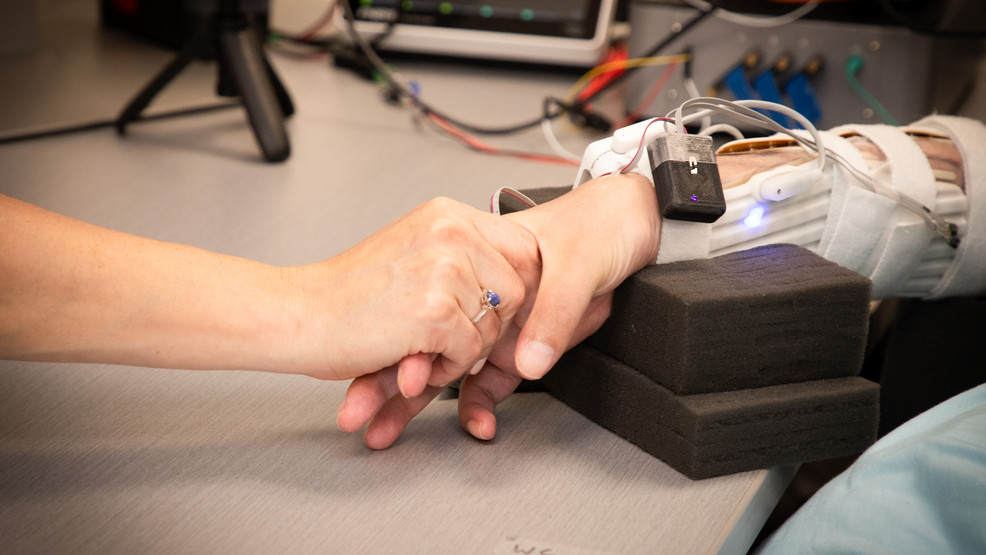For countless individuals, walking is a routine, everyday activity. However, for those suffering from spinal cord injuries, it often feels like a distant and elusive aspiration. In a remarkable development, four patients in China have made significant strides toward reclaiming this vital ability, thanks to an innovative surgical intervention utilizing "brain-spinal interface" (BSI) technology conducted in Shanghai.
This groundbreaking advancement is based on a "triple-integrated" brain-spinal interface system developed by a team led by Jia Fumin at Fudan University's Institute of Science and Technology for Brain-Inspired Intelligence. The system operates by capturing motor signals emitted from the brain's movement center. These signals are decoded using sophisticated algorithms, which then deliver customized electrical pulses to the spinal nerves located below the site of the injury, effectively rerouting movement commands around affected areas.
Unlike traditional external assistive devices, the BSI technology establishes an internal "neural bypass," allowing patients to regain natural control over their limbs. For individuals like Lin, a man in his 30s who became wheelchair-bound after a life-altering fall two years prior, the outcomes have been transformative. This particular surgery marked the fourth instance of clinical proof of concept, performed at Shanghai's Zhongshan Hospital, and it was the first operation of its kind to enable a person with complete paraplegia—the loss of motor or sensory function in the lower limbs—to stand and walk using BSI technology, as announced by the hospital.
The BSI technology is the result of a collaborative effort between Zhongshan Hospital and Fudan University's Institute of Science and Technology for Brain-Inspired Intelligence. Under the guidance of Professors Wang Xin and Ding Jing from Zhongshan Hospital, alongside Jia Fumin from Fudan University, the clinical trial is designed to assess the safety and effectiveness of epidural electrical stimulation (EES) in restoring motor functions in spinal cord injury patients.
When the spinal cord sustains an injury, the vital link between the brain and spinal neurons is severed, often resulting in partial or total paralysis. To combat this issue, Professor Jia's team has pioneered an innovative "three-in-one" BSI technology. Through a minimally invasive surgical procedure, they establish a "neural bridge" connecting the brain and spinal cord. This bridge captures and decodes brain signals, delivering targeted electrical stimulation to specific nerve roots. This cutting-edge approach empowers paralyzed individuals to regain control over their limbs, representing a significant advancement in the treatment of spinal injuries.
Lin's journey began in October 2024 when he volunteered for a clinical trial after seeing a recruitment post on Fudan's official social media channels. His surgery took place on January 8 at Zhongshan Hospital, where minimally invasive implants were introduced: two electrodes, each measuring just 1 millimeter in diameter, were placed in the motor cortex of his brain, along with a stimulator chip implanted in his spine.
The progress following the surgery was astonishingly rapid. By the third day post-operation, Lin was able to move both legs using signals from his brain. Within two weeks, he could lift his right leg high enough to step over moving obstacles. By the fifteenth day, he successfully walked over five meters using a standing frame with suspension support. “I used to cry every day,” Lin expressed. “Now, I can walk again. I am grateful for the efforts of every member of the research team.”
In this groundbreaking clinical trial led by Fudan University in Shanghai, four paralyzed patients experienced the remarkable ability to regain control of their legs within just 24 hours following a minimally invasive surgical procedure. They were able to lift limbs previously thought to be permanently non-functional, walk independently within weeks, and even witness a restoration of nerve function.
This significant advancement was achieved by implanting electrode chips in both the brain and spinal cord, effectively creating a bridge or "neural bypass" that reconnects the body’s natural pathways. During the minimally invasive surgery, two tiny electrode chips, approximately 1 millimeter in diameter, were implanted into the motor cortex of the brain. The entire procedure, which included interventions in both the brain and spinal cord, was completed in a mere four hours. Remarkably, within 24 hours of the surgery, aided by artificial intelligence, patients regained movement in their legs, according to reports from Fudan University.
Despite the promising potential of this BSI technology, there are challenges to scaling its application. These include the limited availability of implantable electrodes and the complexity of accurately decoding diverse motor signals in real time. "Achieving real-time, precise decoding remains our biggest challenge," Jia remarked.
Furthermore, the current system is restricted to adult patients capable of undergoing intensive rehabilitation after the operation, which requires 5 to 7 hours of therapy each day. Collaborating with hospitals such as Zhongshan and Huashan, Jia's team is focused on refining algorithms, gathering more clinical data, and preparing for further regulatory trials. They are also working on developing wearable neuroregulation devices for less severe cases and multi-modal motion monitoring systems for future applications.
Zainab Y.
Also on site :
- I Tried 15 Different Brands of Potato Chips and Found a New Favorite
- '80s TV Comedy Star, 74, Is Unrecognizable During Airport Sighting
- Costco Fans Weigh In on New Food Court Item: ‘Yikes!'

